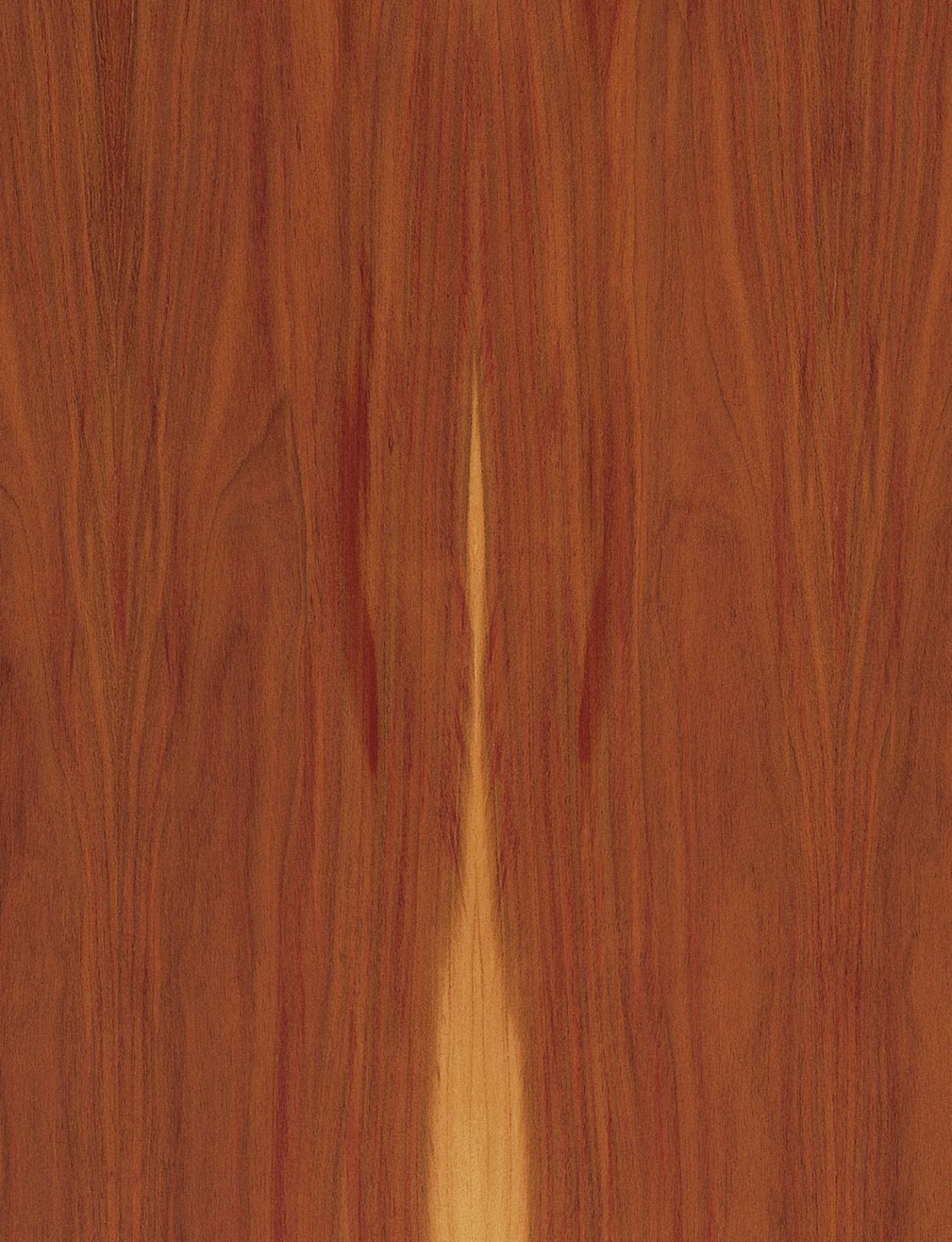
Plumtree
Prunus domestica

Trade Names
Plumtree
Origin
Asia Minor
Range
The plumtree came to Central Europe from Asia Minor. In the German states south of the Danube the tree still grows to some extent in closed forests. Only the fruit yielding plumtree is considered for the production of veneer in Central Europe. Trees having over two meters usable length are found very seldom, therefore no great commercial significance in the veneer industry.
Uses
It is sliced or rotary cut (depending on diameter), otherwise used for turneries, carvings, for marquetry as well as for small objects. Only used for high quality architectural woodwork in the veneer trade because of its rare occurrence. Used also for restoration work on antiques.
Properties
The heartwood is red to violet-brown, to some extent with darker lines, which makes it decorative. The tree is very seldom over 30 years old. The wood is dense, hard and difficult to work.
Machining
It is not easy to work with the wood of plumtree. Due to strong interlocking grain the risk of the edges splitting is very high. However, cleanly planed surfaces have a beautiful luster.
Seasoning
The wood must be dried very slowly and carefully to counteract the strong tendency to check and warp. Appropriate air seasoning is to be given preference over kiln drying.
Finishing
Due to its beautiful color and texture, silky luster or polished surfaces are to be recommended and are not difficult to produce.
Jointing
Screw and nail joints hold firmly and should be pre-drilled. High tensile strength is provided by gluing.
Download

